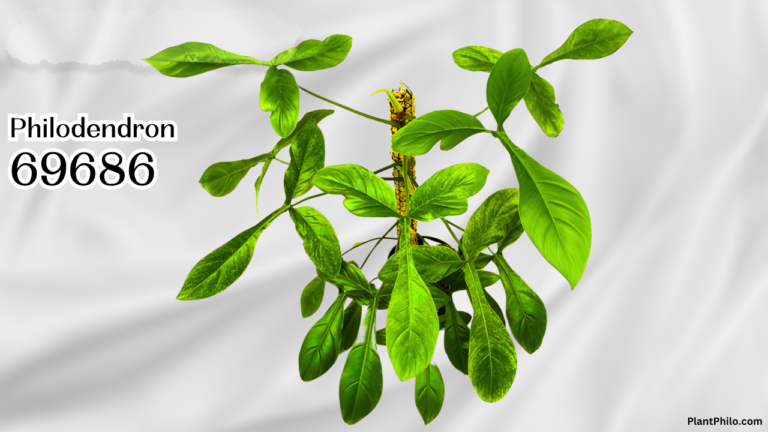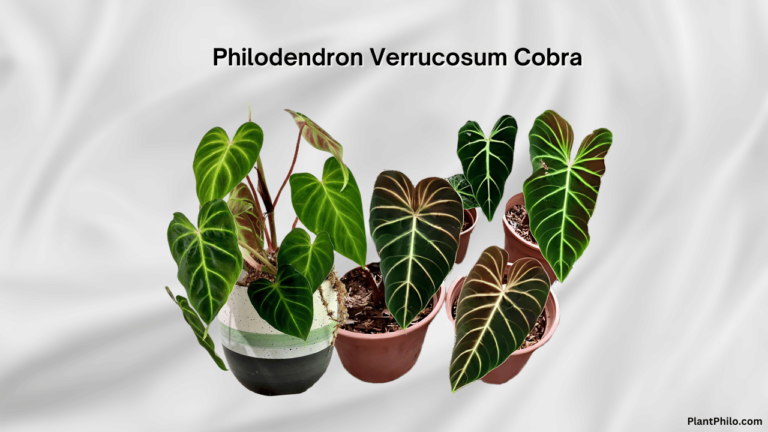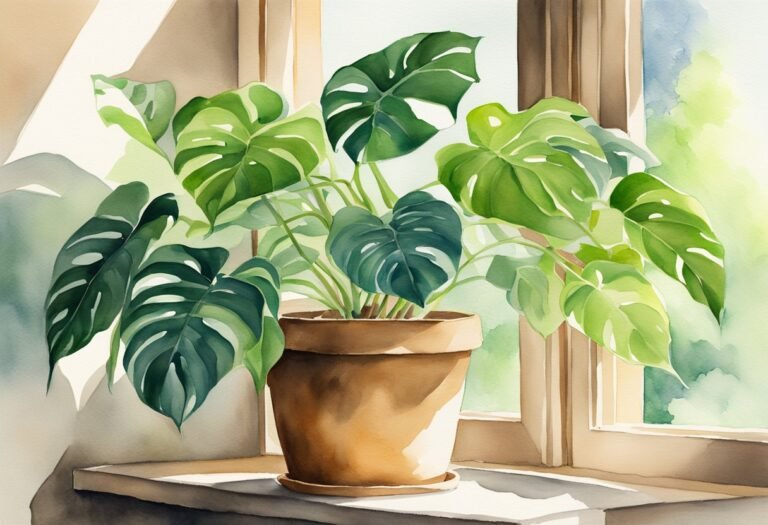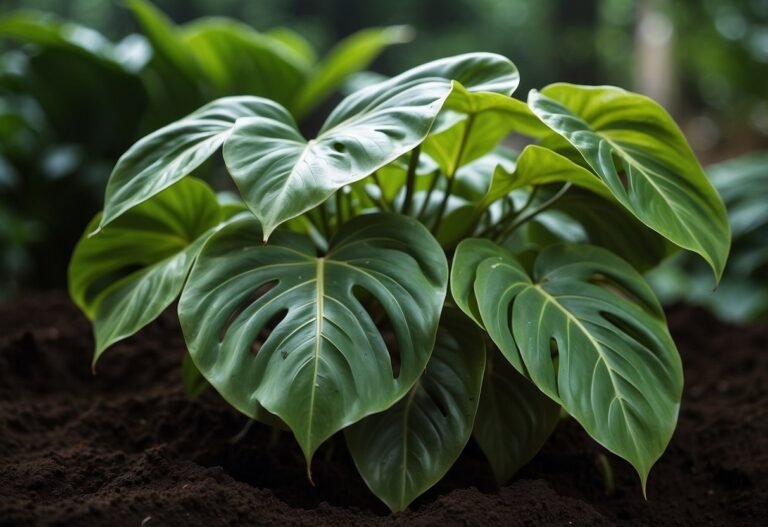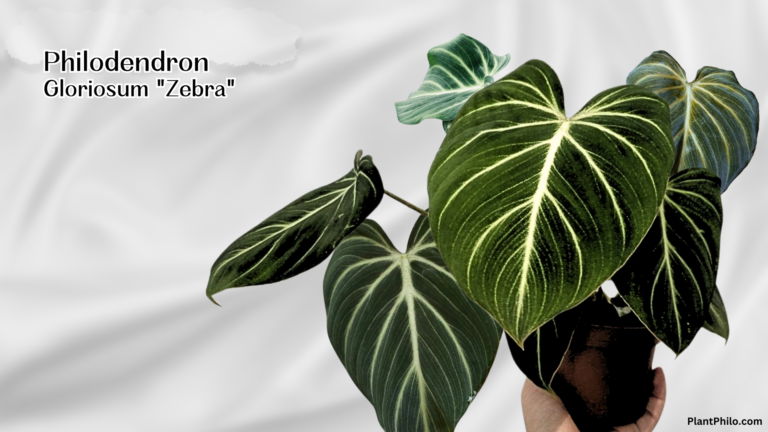Philo Gloriosum Dark Form: What everybody ought to know about her
The Philodendron Gloriosum Dark Form: if the world of rare aroids were a treasure map, this plant would be marked with a big, bold ‘X’. Its velvety, dark leaves and striking white veins have captured the hearts of plant collectors worldwide.
But, like any hidden treasure, it comes with its own set of challenges. Have you ever felt like you’re deciphering ancient hieroglyphics when trying to understand this plant’s needs? Fear not, intrepid plant explorer, we’re here to guide you through the lush jungle of Philodendron Gloriosum Dark Form care!
Information Table: Philodendron Gloriosum Dark Form
| Feature | Details |
| Scientific Name | Philodendron gloriosum ‘Dark Form’ |
| Origin | Tropical rainforests of Colombia and Ecuador |
| Growth Habit | Terrestrial creeper (rarely climbs) |
| Leaf Shape | Large, heart-shaped, velvety texture |
| Leaf Color | Deep green to almost black with prominent white or light green veins |
| Light Needs | Bright, indirect light |
| Water Needs | Keep soil consistently moist but not soggy |
| Humidity | High humidity (60-80%) |
| Soil | Well-draining, airy mix rich in organic matter |
| Fertilizer | Balanced liquid fertilizer during the growing season |
| Propagation | Stem cuttings or division |
| Pests & Diseases | Susceptible to common houseplant pests and root rot if overwatered |
| Toxicity | Toxic to pets and humans if ingested |
Unveiling the Dark Beauty
The Philodendron Gloriosum Dark Form, often affectionately called the ‘Dark Lord’ by plant enthusiasts, is a cultivar of the Philodendron Gloriosum species.
It’s distinguished by its dramatically dark leaves, which can range from a deep forest green to an almost black hue. This dramatic coloration is further accentuated by contrasting white or light green veins that create a mesmerizing pattern.
Care and Cultivation
Caring for a Philodendron Gloriosum Dark Form is like tending to a royal guest. It demands attention but rewards you with its majestic presence.
Light
Think of your Dark Lord as a vampire who enjoys the sun but can’t handle direct exposure. Bright, indirect light is ideal. A spot a few feet away from an east- or west-facing window is perfect. Avoid harsh, direct sunlight, which can scorch those beautiful leaves.
Water
The key is to keep the soil consistently moist but not waterlogged. Imagine your plant’s roots are like Goldilocks – they want it just right! Check the top inch of the soil; if it feels dry to the touch, it’s time to water. Use lukewarm water and ensure excess water drains freely to prevent root rot.
Humidity
Hailing from tropical rainforests, the Dark Lord craves high humidity. Aim for 60-80% humidity. You can achieve this by misting regularly, using a pebble tray, or running a humidifier. Group your plants together to create a microclimate, or consider placing your Dark Lord in a naturally humid area like a bathroom or kitchen.
Soil
A well-draining, airy mix is crucial. A blend of peat moss, perlite, orchid bark, and coco coir works well. Think of it as creating a luxurious bed for your plant’s roots to spread and thrive.
Fertilizer
Feed your Dark Lord during the growing season (spring and summer) with a balanced liquid fertilizer diluted to half strength. Avoid fertilizing during the fall and winter when the plant is dormant.
Propagation
The Dark Lord can be propagated through stem cuttings or division. When taking cuttings, ensure each cutting has at least one node and a few leaves.
Root the cuttings in water or moist sphagnum moss. The division is best done during repotting when you can carefully separate the plant into multiple sections, each with its own roots and leaves.
Pests and Diseases
Keep an eye out for common houseplant pests like spider mites, mealybugs, and scale. Treat infestations promptly with insecticidal soap or neem oil. Overwatering can lead to root rot, so be mindful of your watering practices.
Frequently Asked Questions
Why are the leaves on my Philodendron Gloriosum Dark Form not dark?
This could be due to insufficient light. The Dark Form needs bright, indirect light to develop its characteristic dark coloration.
How often should I repot my Philodendron Gloriosum Dark Form?
Repot every 1-2 years or when the roots become overcrowded. Spring is the ideal time for repotting.
Can I grow my Philodendron Gloriosum Dark Form outdoors?
Yes, but only in tropical or subtropical climates with high humidity and filtered light. Protect it from direct sunlight and extreme temperatures.
Is the Philodendron Gloriosum Dark Form a climber?
While it can occasionally climb, it’s primarily a terrestrial creeper. Provide it with ample space to spread its leaves horizontally.
How do I encourage my Philodendron Gloriosum Dark Form to produce larger leaves?
Provide optimal growing conditions, including bright, indirect light, consistent moisture, high humidity, and regular fertilization during the growing season.
What are the signs of overwatering in a Philodendron Gloriosum Dark Form?
Yellowing leaves, mushy stems, and a foul odor from the soil are signs of overwatering. Allow the soil to dry out slightly between waterings.
Can I propagate my Philodendron Gloriosum Dark Form from a leaf cutting?
Unfortunately, leaf cuttings won’t produce new plants. You need a stem cutting with at least one node for successful propagation.
Why are the new leaves on my Philodendron Gloriosum Dark Form smaller than the older ones?
This could be due to several factors, including insufficient light, nutrient deficiencies, or the plant adjusting to a new environment.
Is the Philodendron Gloriosum Dark Form rare?
Yes, it’s considered a rare and sought-after aroid due to its unique coloration and limited availability.
Where can I buy a Philodendron Gloriosum Dark Form?
Look for reputable plant sellers specializing in rare aroids. Be prepared to pay a premium price for this coveted plant.
To Conclude,
The Philodendron Gloriosum Dark Form is a captivating plant that adds a touch of drama and elegance to any collection.
While it requires a bit more attention than some other houseplants, the rewards are well worth the effort. With proper care, your Dark Lord will thrive and enchant you with its dark beauty for years to come.


